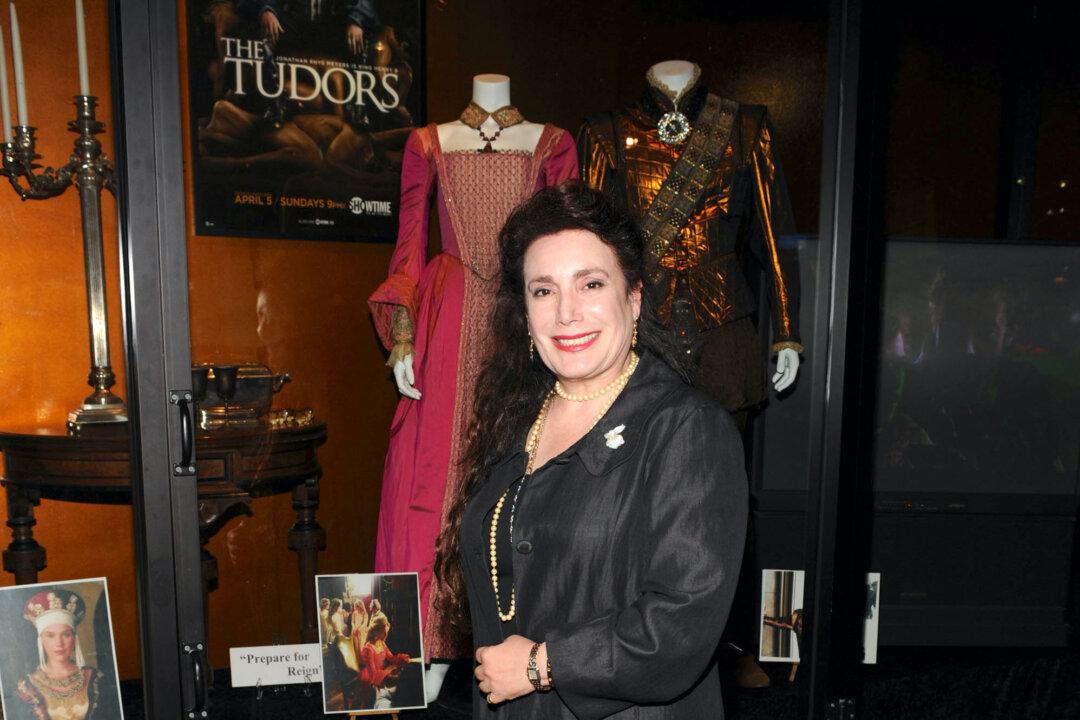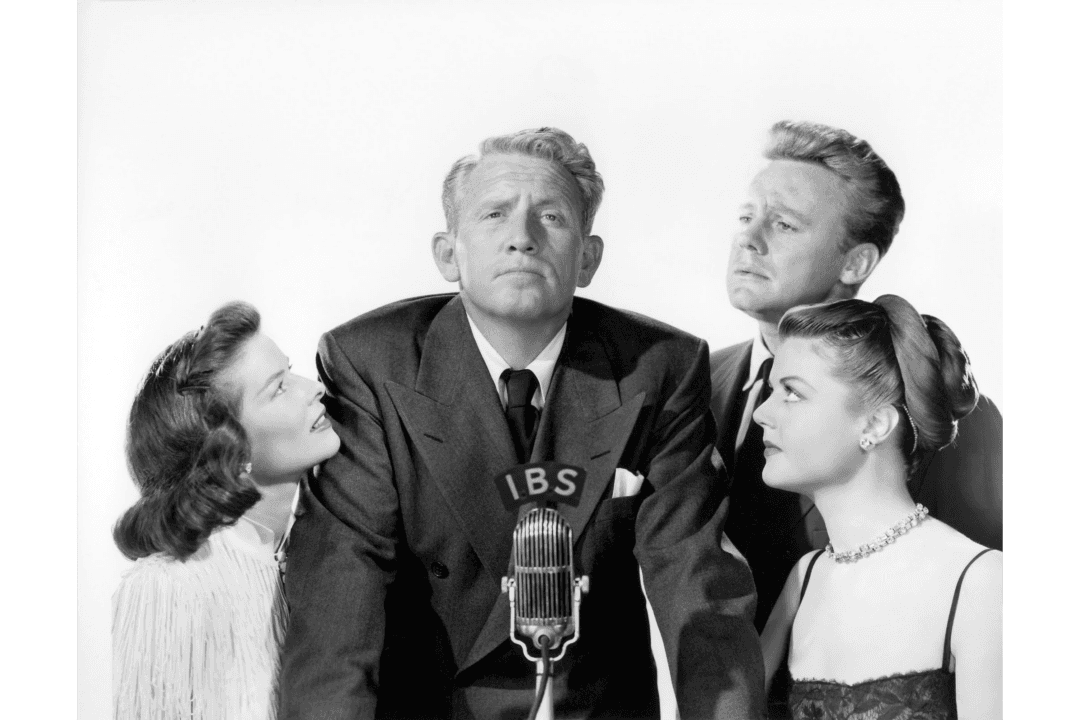I first met Ms. Dadigan in January 2020, when I was covering a VIP event at the Hollywood Museum as a red-carpet interviewer for a digital magazine. The magazine was planning to feature Ms. Dadigan in an upcoming issue, and I was very excited about the prospect of interviewing her inside the museum. However, we all know what would happen two months later, postponing any thought of an in-person interview. I ran into her by chance at Mel’s Drive-In two years later when I was covering the Turner Classic Movies Film Festival. We had a pleasant chat, and she was excited about the prospect of being interviewed for The Epoch Times. Nevertheless, busy schedules prevented an immediate appointment from being made, and my focus turned to San Diego County because of my opera career soon after.
About the Museum
The Hollywood Museum is located in the old Max Factor building, where the cosmetic king designed signature hair and makeup looks for Hollywood’s biggest stars. Ms. Dadigan suggested that we conduct the interview in the Brunettes Only room, since we both have dark hair. Although Ms. Dadigan has done many interesting things in her life, the museum is the achievement for which she is most widely known, so I started by asking her about how she founded it.
She explained, “My mother and I started this museum, and it was about giving back to the community. I grew up in Los Angeles, and I ended up working with so many different celebrities that were in front of the camera and behind the camera in the real estate business, and I really got to know them through our work together. If I had only known at that time I was going to open a museum, I would have asked each and every one of them for something for the museum. But the museum didn’t come on until later. We decided to start this, and it’s a love letter back to the community. Both my mom and I were schoolteachers, and so it was about being able to, in this love letter, educate and entertain everyone who was going to come. We’ve had such fun creating this.”
The museum opened in 2003, by appointment only. They started out with a small budget, but the museum quickly became so popular that they extended the hours to five days a week with no reservations needed. Before it could open, though, they had to collect the memorabilia. Ms. Dadigan thanks Hollywood’s honorary mayor, Johnny Grant, “because he was so helpful speaking with the classic actors and celebrities of today, as well as movie studios and production companies. And so we were able to amass quite a wonderful amount of memorabilia to display, but then 9-11 hit, and all the studios and production companies said they would have to think about it and do it later.” They had to use the resources which would have been devoted to creating different inventories of memorabilia for increasing security for the studios and sound stages instead. “So we had a small collection from the different entertainers and their families, their heirs, and their fans, and Johnny Grant again said to me, ‘Kid, you can’t open this museum unless it’s filled.’ So I began on a quest of collecting, and it’s been a wonderful ride since then.”
Ms. Dadigan always politely refuses to name a favorite piece of memorabilia in the museum, saying “It’s like asking a mom, who’s her favorite child?” She added, “But I know that when our visitors come, they love to try to figure that out because there are so many great things, whether it’s Marilyn Monroe, ‘The Silence of the Lambs,’ the complete jail cell that Hannibal Lecter was ensconced in, if you can imagine, and Jodie Foster’s Clarice Starling. She walked down the jail cell corridor, even the chair she sat in, and the cars from ‘The Transformers.’ You can go down the list. So many wonderful exhibits, but I personally should not tell you.”

When asked whether there’s one more item that she hopes to eventually acquire, Ms. Dadigan answered, “We’ve been so fortunate, when I think about it. Whether it’s the ruby slippers, whether it’s Marilyn Monroe’s iconic USO outfit, the wedding dress that she wore, the honeymoon dress that she wore, whether it’s Elizabeth Taylor items, whether it’s the classic beauty calibrator, there’s so much that I think about, but I have to say so many people are so excited about all of these artifacts.”
About José Iturbi
To me, one of the most interesting things about Ms. Dadigan is that she is the goddaughter of José Iturbi. Many people may not recognize that name now, but he was one of the most famous concert pianists and conductors in the 1940s and 50s. Recalling their relationship, Ms. Dadigan said, “I was very fortunate, you know. My godfather just lived a few blocks away from me when I was growing up. And he made a point of helping me with my tutelage. Everything I couldn’t learn in school and that they didn’t have in a schoolbook, he taught me. So those were the lessons of life. And it was so exciting. Whenever he was home from concertizing, because he was on concert tour maybe 200 days a year, he was busy touring the world. He even had his own plane that they flew, his own jet. But for me, he was just truly ‘padrino,’ godfather in Spanish. And he taught me so, so much.”Ms. Dadigan witnessed Iturbi’s musical fame firsthand: “I remember as a child going to sold out concerts with my mother and my godmother. And we would watch him and then afterwards, we would be backstage, and I would see all these throngs of fans. And there were movie stars, but I didn’t know they were movie stars when I was little. They would come back, and they would have conversations and whatnot. And then to think decades later I would meet them again when we were getting ready to start this museum. Quite something. My godfather was the first classical musician to sell one million copies of a single record. For this great feat, he was given a star on Hollywood Boulevard on the Walk of Fame,” making him the first classical musician thus honored.
“It was kind of amazing because you would have never thought that a classical musician, a pianist, would be playing Chopin’s ‘Military Polonaise’ and sell a million copies of that one record.” That was in 1950, five years after her dubbed the piano for this song in the composer’s biopic, “A Song to Remember.” He would repeat the feat in 1953 with his recording of Claude Debussy’s “Clair de lune.”

Regarding their personal relationship, Ms. Dadigan recalled, “I was the granddaughter he didn’t have. He had a daughter who sadly died early, and he had grandchildren, but they lived on the East Coast. And it was a different type of relationship, in that they would come and visit, but I was here all the time, and I was younger. I loved my godfather. I was much more obedient and serious as a child than I am today, and I absorbed everything my godfather had to say. I’m so appreciative that he shared all this knowledge with me. Whether it was important knowledge that you could gain by going to school, or reading a book, or life lessons. For me, the most extraordinary were the life lessons.”
The musical influence rubbed off on Ms. Dadigan, who also became a pianist. Of her training, she said, “I was very fortunate in that my first piano teacher was his sister, Amparo Iturbi, who was also a well-known concert pianist. I was her youngest student by about 20-some-odd years. And I had a wonderful time with her until she passed in the 1960s. After that, my godfather took over my tutelage. I actually went to UCLA and was a music major there. I had a wonderful time there and studied at the Paris Music Conservatory, but it was my godfather who really taught me. I can’t thank him enough because playing piano is one thing. Playing it in a way to truly enjoy it is something else. And then being able to use those lessons in my day-to-day living. It’s so extraordinary when you think about it.”
José Iturbi’s Legacy
José Iturbi was a featured actor in seven MGM movies in the 1940s. This was long before Ms. Dadigan “was even a thought in my parents’ mind,” but Ms. Dadigan has a lot of stories about his life as a Hollywood resident.“He had famous neighbors where he lived,” she said. “Whether it was the studio boss Harry Cohn or Jean Negulesco, the director, they all lived in his neighborhood. There was big talk about wanting to bring more culture to the movies. As a result, they tried to bring in, and they did bring in, very famous classical musicians that were internationally known. My godfather said, ‘Well, okay, but here’s what I need.’ Most stars or most people just starting in movies, you would never dictate to the studios what you want. But my godfather did. And he said he always had to play himself, which they agreed to. He always had to be a good person. His character had to be good, and they agreed to that. He always had to play piano and conduct an orchestra, and they agreed to that. So as a result, he starred in many MGM musicals.”

Ms. Dadigan loves all of her godfather’s films, as do I, but she does have preferences in that topic. “I think one of them that I do especially like the most, and for interesting reasons, is ‘Anchors Away,’ because it was with Frank Sinatra and with Gene Kelly. Gene Kelly lived two doors from my godfather’s sister, Amparo Iturbi, and right around the corner from us, and so we would always see him as children. And then Frank Sinatra! I remember going to my godfather’s home, and Frank Sinatra would be there. I met him again many years later, and we had such a lovely conversation about my godfather. They were good friends till my godfather passed.”
José Iturbi died in 1980, but Ms. Dadigan is keeping his legacy alive through The José Iturbi Foundation, a nonprofit organization she founded in 1985 with her godmother, Marion Seabury, who was Iturbi’s secretary and devoted companion for years. She said, “We started the José Iturbi Foundation after my godfather passed away. He knew about it before, and my godmother and I started it. Our goal is to popularize classical music for young people today and keep classical music alive. We say, ‘popularizing classical music one note at a time.’” The Foundation has hosted many competitions for young pianists and singers over the years. They still occasionally host these events in conjunction with other organizations.
It was a great pleasure to spend this time with Ms. Dadigan, talking about her journey with the Hollywood Museum and her fascinating background with José Iturbi. She mused, “If these walls could talk” as we sat in the Brunettes Only room, but listening to her reminiscence was enough! If you’re making a trip to Los Angeles, I recommend you spend a few hours at the Hollywood Museum to see a loving tribute to Tinseltown’s golden era.







